In one of my favorite pieces of last-century fishing writing the British fishing theorist and statesman Sir Edward Grey uses the phrase “crisis of the rise” to describe the challenge and urgency of dry fly fishing. I really dug that phrase when I first encountered it in my mid 20s—perhaps because it conferred onto my practice of fishing a legitimacy and seriousness too easily obscured by a trunk full of Cliff Bars and energy drinks, by a water-wrecked cell phone that could only receive calls, by a selective animus toward personal hygiene (the hex hatch, the hex hatch, the hex hatch). In those unboated, 4-weight, small stream days, I either fished dries or swung streamers or wets, and during the off-season I could always find an interesting piece of writing that spoke to the metaphysical essence of those regal approaches, something to read next to a clanking radiator on a cold Michigan night: Gordon or Grey or Voelker or Haig-Brown.
But what about the stripped streamer? Who will sing of the Butt Monkey arcing through the dawn toward a cutbank? The Double Nickel swiveling at last light past a logjam?
Brothers and sisters of the frayed fingerguard, the clawed line-hand, the aching rod-shoulder, it is time to elevate the stripped streamer to the high pantheon of angling techniques. It is time to speak of the three fundamental, even existential, crises of the strip.
Crisis #1: The Cast
First things first: the use of the term “blind casting” to describe the freshwater process of casting without seeing a fish is a total misnomer. In fact, I’d go as far as argue the opposite is true, that no one method of fishing puts as much onus on vision as stripping streamers down a ten-mile lane of torturous, wood-chocked river. Because while it’s true you might be blind to the fish themselves, you are certainly not blind to fish-holding cover and structure. At least, you better not be.
I remember once being on the oars with a non-angler friend who had just learned to cast but not read water. This made him a true blind caster, and it was both pitiful and revelatory to watch. “Dear God,” I thought watching casts that fell too far upstream or too far down of the best fish-holding structures and seams. “He’s going to throw all day and not catch a fish.” It reminded me of how you can live in a big apartment building and, unless you’re familiar with the schedule of the people on your floor, go weeks or months without ever running into a neighbor.
Visually, to strip streamers is to be in two places at once: fully present in the cast you are working, fully anticipating the opportunities just ahead of you. Presence and anticipation, ying and yang, push and pull—whatever you want to call it, too much focus on one of these elements at the expense of the other leads to lack of balance in your streamer game and fewer donkeys in the boat. It’s this fundamental tension that makes streamer fishing so addicting; it’s also what separates good from great streamer anglers.
This level of strategy and precision is important because if you’re throwing streamers, you’re looking for The One, and The One is a highly efficient predator. It gets hungry, it eats. And is then no longer hungry. That leaves a pretty small window of opportunity if you’re looking to simply serve up a meal. A better strategy is to use the streamer to invade the personal space of a large trout—to insult Leviathan where he lives or loafs. Kick his barstool in that mid-channel slot. Flip him the bird as you pass his logjam. Ding-dong ditch that shady cutbank. Do it right, and you’ll find yourself confronted with a whole new set of crises.
Crisis #2: The Chase
Alright, so you’ve angered the drunk, roused the beast, ding-dong-ditched the landlord— maybe all three at once—and now you’re being chased by a spotted tank with fins. How do you make sure this monster isn’t going to be content to just run you off the lawn? How do you convert that anger, surprise, fear or hatred into a punishing eat? Enter Crisis of the Strip #2.
Of the three fundamental crises, this is the most mysterious. The best streamer anglers I know in both warm and cold water have a sixth sense for how to convert a follow into an eat, which essentially means making a split-second read of the fish’s mood and altering your retrieve accordingly. Of course, with infinite time and river you could try doing 20 different things to your fly—have it swoon, stutter, dash, and dance—until you found that individual fish’s trigger. But the reality is that with each strip of line you, the angler, are running out of river. And with each thrust of its tail your quarry is moving further from the safety of its lair, and getting warier by the second.
The solution to this crisis is not physical, but rather mental: you must go against what feels logical—that is, whatever else you do, whatever other magic and micro-movements you impart to the fly, you must resist slowing or shortening your strips. With the car approaching the cliff, you don’t slam on the brakes. You steady the wheel, you punch the gas, you hold on tight. And then?
Crisis #3: The Eat
There’s a scene in John Carpenter’s classic sci-fi thriller “The Thing” where Kurt Russell figures out that the way to determine who in their party is an alien is to draw separate blood samples from each crew member and burn the blood with a red-hot wire. This works because any part of The Thing, no matter where it’s located, feels what the rest of The Thing feels. When Russell gets to the vial with the Thing’s liquid in it, the The Thing freaks out, revealing itself. Then the The Thing gets torched.
So it is with streamer fishing.
In the zone, you and your fly are The Thing. When it gets attacked, you get attacked—the trick is not to freak out about it. You want to keep calm. Way calm. Because a lot that can go wrong if you don’t keep your cool. You might raise your rod tip, you might make a sloppy strip set, you might miss your line all together or you might do all three. Driving the hook home firmly and precisely only comes with experience, though the right mind set doesn’t hurt, either. One of the best pieces of advice I’ve gotten regarding the strip set comes from muskie whisperer Chris Willen—keep setting the hook until you can’t. If you remember that the strip-set is not so much a skill as an attitude, you’ll be well on your way to next-level streamer fishing.
Conclusion
Of course, you’re not going to make all your casts, you’re not going to convert all your follows, you’re not going to stick all your eats. But you can improve your vision, you can refine your muscle memory, and you can learn to keep calm under pressure. And if by the time the boat slithers back onto the trailer you have done all these things, then you can take heart that you have fished well—even if no fish chased and nothing came to hand. And fishing well, when it comes to streamers, is no easy thing.
None of the high arts are.





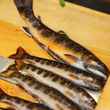
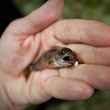









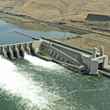




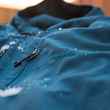



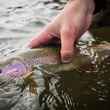




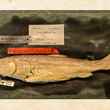
Comments
Ross Slayton replied on Permalink
One of the best articles I've devoured straight up
streamer junkies rejoice!
Arthur Strauss replied on Permalink
Concise and informative writing. Omitted the cursing that follows a missed strike!
Andrew Wesner replied on Permalink
Really well written. Nice job! When I dry fly fish I think like a bug. When I streamer fish, I think like a minnow and try to act like one underwater. It's kind of like a weird marionette show I perform for the audience of Mr. Brown...Thanks again for sharing the article.
Pages